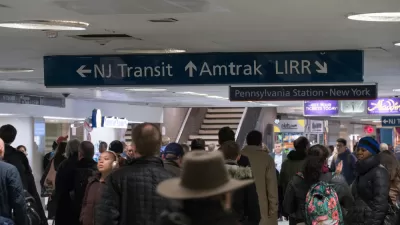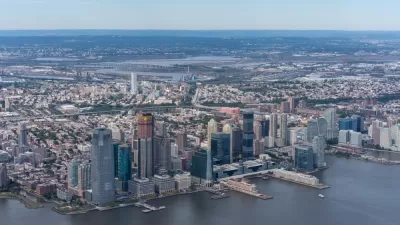Considered by some to be the most critical infrastructure project in the country, the Gateway Project is an ongoing example of the extreme costs of bureaucratic and political neglect.

The Gateway Development Commission, tasked with managing the Gateway Program to develop new capacity for the Northeast Corridor between Newark, New Jersey and Penn Station in New York City, announced at the end of August that the project will open three years later than expected and cost $2 billion more to construct.
Officials blamed some of the delay and expense on “market volatility and inflation,” according to an article by Dana Rubinstein for the New York Times. “The commission hopes to make up much of the cost difference with funding from the federal infrastructure law passed last year. The remaining cost overrun will be split between New York and New Jersey and the federal government.”
The news is only the latest unwelcome development in the long saga of the Gateway Program. Since the Biden administration took office, the news has generally been good—funding approval for the Portal Bridge and a $14 billion funding agreement between the states of New Jersey and New York. The last time Planetizen picked up news of time and money being added to the project timeline was in September 2020.
Rubinstein includes a discussion of the high costs of transit infrastructure investments in the article, citing Eric Goldwyn, director of the Transportation and Land-Use program at the N.Y.U. Marron Institute, to explain how expensive is the project compared to other projects in the country and world. The Marron Institute produced the first study on the high cost of transit in 2021.
FULL STORY: Commuter Tunnel Under the Hudson Won’t Be Finished Until 2035

Study: Maui’s Plan to Convert Vacation Rentals to Long-Term Housing Could Cause Nearly $1 Billion Economic Loss
The plan would reduce visitor accommodation by 25,% resulting in 1,900 jobs lost.

North Texas Transit Leaders Tout Benefits of TOD for Growing Region
At a summit focused on transit-oriented development, policymakers discussed how North Texas’ expanded light rail system can serve as a tool for economic growth.

Using Old Oil and Gas Wells for Green Energy Storage
Penn State researchers have found that repurposing abandoned oil and gas wells for geothermal-assisted compressed-air energy storage can boost efficiency, reduce environmental risks, and support clean energy and job transitions.

Private Donations Propel Early Restoration of Palisades Playground
Los Angeles has secured over $1.3 million in private funding to restore the Pacific Palisades playground months ahead of schedule, creating a modern, accessible space that supports community healing after recent wildfires.

From Blight to Benefit: Early Results From California’s Equitable Cleanup Program
The Equitable Community Revitalization Grant (ECRG) program is reshaping brownfield redevelopment by prioritizing projects in low-income and environmental justice communities, emphasizing equity, transparency, and community benefits.

Planting Relief: Tackling Las Vegas Heat One Tree at a Time
Nevada Plants, a Las Vegas-based nonprofit, is combating the city’s extreme urban heat by giving away trees to residents in underserved neighborhoods, promoting shade, sustainability, and community health.
Urban Design for Planners 1: Software Tools
This six-course series explores essential urban design concepts using open source software and equips planners with the tools they need to participate fully in the urban design process.
Planning for Universal Design
Learn the tools for implementing Universal Design in planning regulations.
Ascent Environmental
Borough of Carlisle
Institute for Housing and Urban Development Studies (IHS)
City of Grandview
Harvard GSD Executive Education
Toledo-Lucas County Plan Commissions
Salt Lake City
NYU Wagner Graduate School of Public Service





























